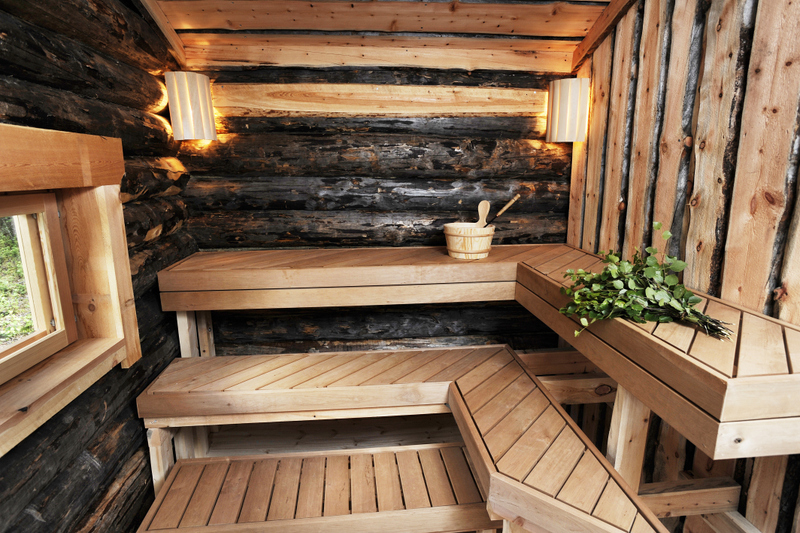Traditional Sauna for Beginners
Traditional Sauna for Beginners
Blog Article
How Traditional Sauna can Save You Time, Stress, and Money.
Table of ContentsThe Ultimate Guide To Traditional SaunaTraditional Sauna Fundamentals ExplainedAn Unbiased View of Traditional SaunaThe 25-Second Trick For Traditional Sauna
The majority of the weight shed in a sauna is water loss and is re-gained upon rehydrating. Without a doubt sauna can be an essential component of a healthy and balanced weight loss program. To consider the distinctions between conventional and IR saunas, I will divide these right into verifiable, theoretical, and fabricated distinctions.Hence, the most popular point in the saunawhich goes to the ceiling directly above the sauna heateris commonly in between 185 and 190 F. Traditional Sauna. Claims that a conventional sauna surpasses 200 F is just not true and not appropriate for electric saunas offered in the US. The temperature level for a far-infrared sauna is typically established in between 120 and 140 F; nonetheless, unlike the conventional sauna, the objective in and IR area is not to accomplish a heat
Due to this, the temperature difference is practically unimportant, considering that excessive sweating leads to both sauna types, however the technique of heating the body is different. In an IR sauna the bather will certainly really feel hot and will sweat profusely, yet at much reduced temperature levels. Thus, if the objective is to spend longer amount of times in the sauna, the IR sauna is a great option.

The smart Trick of Traditional Sauna That Nobody is Talking About
When the high temperature level is achieved, the components cycle on and off to maintain the heat. A lot of standard sauna customers enjoy pouring water over the rocks to create heavy steam to raise sauna humidity degrees. The benefits of putting water over the rocks consist of: making the room much more comfortable, moistening the nasal passages, and allowing the use of aromatherapy by mixing necessary oils with the water.
In a far-infrared sauna, the heat waves permeate the body to successfully warm the body and elevate the body core temperature. To achieve this enhanced temperature, Far-infrared emitters develop infrared power which is close to the same wavelength as that which the body naturally emitsoften described as the "Essential Range" of 7 to 14 microns), so the energy is well gotten by the body.
When the power enters the body, it triggers the body temperature to raise and eventually results in sweating. In an infrared sauna it is necessary for the emitters/heaters to remain on almost regularly. Because there is no mass of rocks to maintain heat, the sauna will cool if the emitters turned off.
As discussed above, the sauna bather in an infrared space intends to place himself in front of operating emitters to get optimal take advantage of the warmth. The home heating time for both areas can be really various, depending on exactly how the areas are utilized. For a typical sauna, a bather must enable 30-40 minutes for the area to attain a desired temperature and to effectively pre-heat the rocks.
Little Known Questions About Traditional Sauna.
A well built sauna will generally achieve a temperature of 150-160 F in concerning 30-40 minutes. For hotter temperature levels, the space may need to heat for a longer duration.
To some, 15 mins was "wasted" while the infrared energy heated up the wood panels as opposed to heating up a body, while others locate a pre-heated room to be extra comfy and think an elevated starting temperature is necessary to start sweating. The size of suggested usage for each space is around the very same (10-15 mins per session); nonetheless, as a result of the lower air Get More Information temperatures and the ability to really feel the effects of infrared heat quicker than a standard sauna, it is not unusual for an individual to invest a total amount of 20-30 mins in an infrared sauna.
Traditional saunas tend to be larger (for this reason make use of even more electricity) than infrared saunas, although traditional saunas are definitely offered in one and two person sizes as well. For a two-person typical sauna, 5x6 or 5x7 dimension is most prominent. The leading bench can conveniently seat 2 or three people and is additionally enough time to exist down during the sauna session.


The ordinary cost per kWH of electrical power in the united state is about $0.11, so a 4.5 kW heater will certainly cost around $.50 to compete one hour, if the heating unit runs continuously for one hour. Generally a sauna heating system will run for 75% of the initial hour and 50% of subsequent hours on since the aspects cycle once the established temperature is attained.
An Unbiased View of Traditional Sauna
A 2 individual far-infrared room is usually physically smaller than a standard sauna, often about 4' x 4' or smaller sized. The IR heating unit is typically 1.5-1.7 kW using a 120 volt 15 amp plug-in service. Because the space can be made use of earlier than a sauna Full Article area, we will presume the space is utilized for to of an hour consisting of warm up time.
There is a rarely talked about difference in the social experience in between the two spaces. While our culture has lost a few of the social advantage of the standard sauna experience, it can be extremely socially satisfying. From household time in the sauna, to heart-felt conversations with substantial link others, to sauna partiesthe standard sauna experience can cause intimate interacting socially.
A lot of greater end infrared rooms consist of colored light therapy, sound systems and full-glass fronts.
Report this page